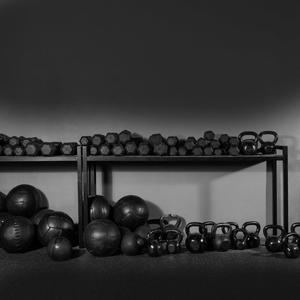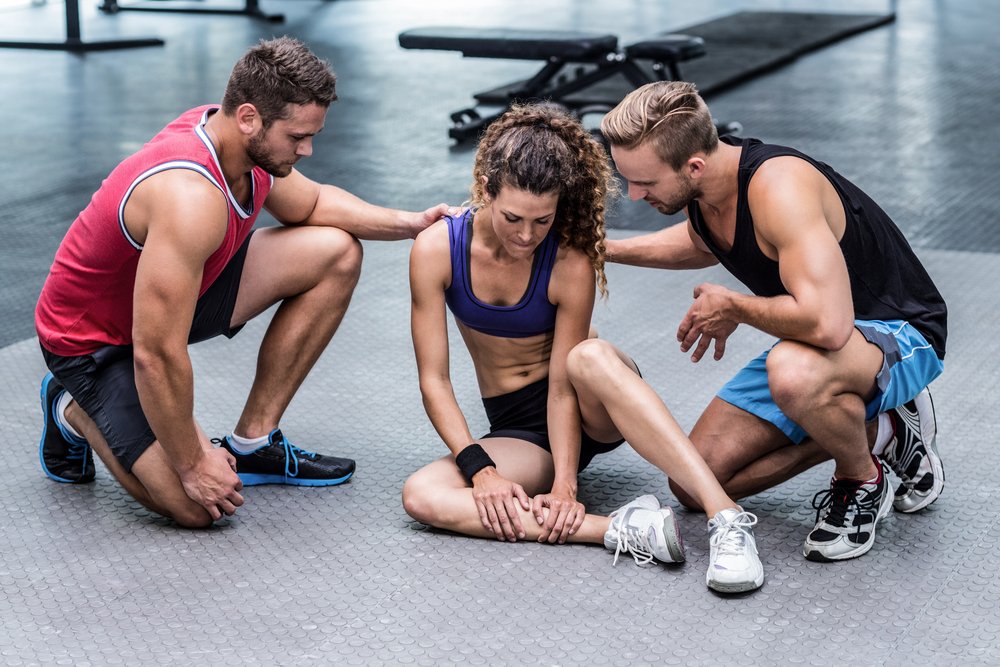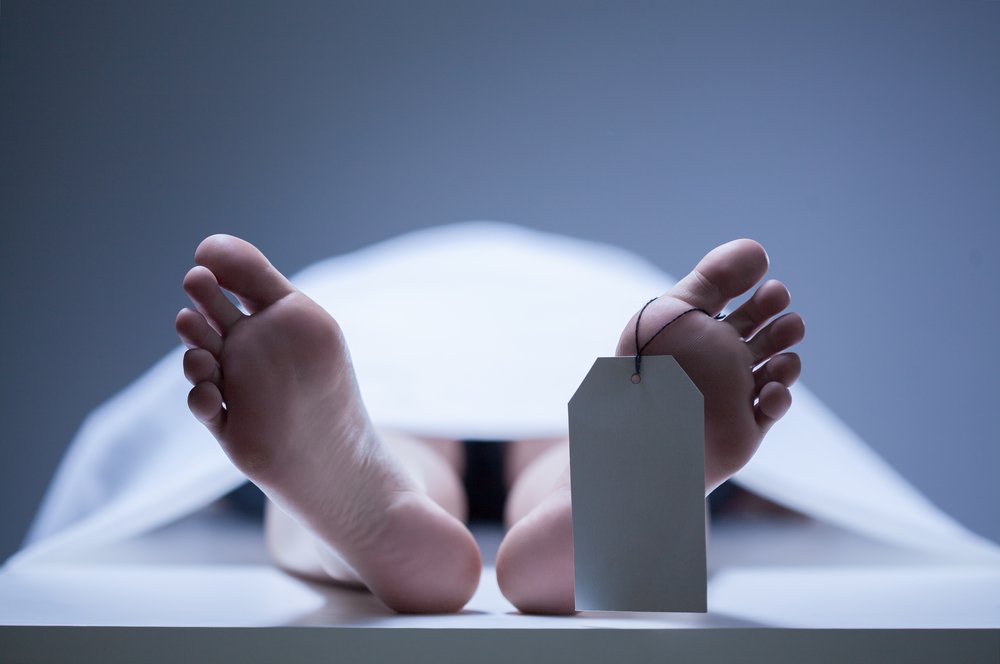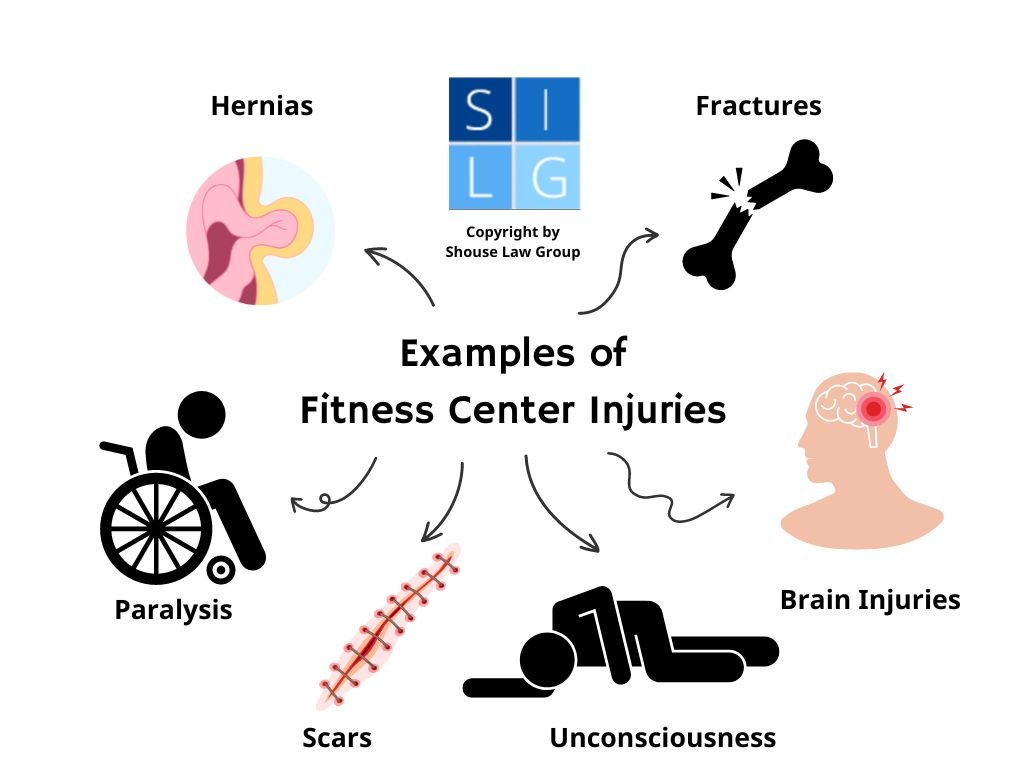
Fitness center injuries are typically caused by negligent
- trainers,
- gym owners,
- other gym members, and/or
- third-party contractors responsible for inspection and maintenance of the equipment.
In California, if you get injured at a gym due to the negligence of the facility, its staff or trainers, you can bring a personal injury lawsuit for damages. You may also be able to file a product defect lawsuit against an equipment manufacturer for injuries suffered by using faulty equipment.
Below, our California personal injury lawyers discuss the following frequently asked questions about fitness center accident lawsuits:
- 1. Can I sue if I am injured in a fitness center?
- 2. What should I do after a gym injury?
- 3. Who is to blame?
- 4. What are my damages?
- 5. Can I file a claim if my spouse was killed?
- 6. What defenses can the gym assert?
- 7. What if I was partly to blame?
- 8. How common are gym accidents?
- Additional Reading
If you have further questions after reading this article, we invite you to contact us at Shouse Law Group.

When you are injured in a fitness center in California, you may be able to file a personal injury lawsuit for damages.
1. Can I sue if I am injured in a fitness center?
Yes. You can sue a negligent gym owner, trainer, and other responsible parties for your injuries. To prove negligence, you need to prove:
- The defendant owed you a duty of care;
- The defendant breached that duty of care; and
- The defendant’s negligence was a substantial factor in causing your injuries or death.1
Common causes of gym injuries that stem from someone’s negligence include:
- Slip-and-falls,
- Negligent hiring, retention, or supervision of unqualified staff,
- Unsafe conditions, and
- Failure to maintain equipment.
2. What should I do after a gym injury?
After a gym injury, first seek medical attention. Plus keep track of how long it takes your injuries to heal, if they worsen, or if new ones manifest.
Also collect the contact information from anyone who may have seen the accident. If there was an equipment malfunction, ask the gym to keep the equipment so it can be checked out by an expert.
In addition, take photos and videos of the area around the accident, including any obstacles or conditions that may have contributed to your injury. Be sure to document any bloodstains, bruises, etc.
Finally, speak with your attorney about reporting the incident to the gym itself. An attorney can help you compose the report so no blame can be attributed to you.

The speed and momentum of gym equipment can cause violent accidents.
3. Who is to blame?
Parties who may be to blame after a gym injury accident include:
- Property owners
- Gym owners
- Trainers
- Fitness center employees
- Other gym members
- Equipment manufacturers
- Third-parties who inspect and maintain the equipment
After a fitness center injury accident, you may not know the cause of the accident or who was responsible. It may require an investigation to determine who was responsible.
Is the gym owner liable for my injuries?
Under California’s premises liability laws, the gym owner or occupier is required to keep the property in a reasonably safe condition. This includes repairing any known hazardous conditions or warning visitors about hazardous conditions.2
So if your injury was caused by a dangerous condition at the gym, such as a slippery area or torn gym mat, the gym owner may be liable for any injury caused by the slip and fall.
Some gyms – like recreation centers – are owned or operated by the local city or county. If your injury occurred in one of these facilities, the city could be liable for damages if:
- The city-owned or controlled the property;
- The property was in a dangerous condition at the time of the accident;
- The dangerous condition created a reasonably foreseeable risk of the kind of injury that occurred;
- The city had notice of the dangerous condition for a long enough time to have protected against it;
- The plaintiff was harmed; and
- The dangerous condition was a substantial factor in causing the plaintiff’s harm.3
Is my trainer responsible for my injuries?
Your trainer or instructor may also be responsible for your gym injury if they were negligent or reckless in causing the accident. An example would be if the trainer tells you to do something that a reasonable trainer would not suggest, which then leads to you getting hurt.
The reasonableness of the trainer would be a question for the jury, based on what other trainers would do or not do in a similar situation.
Example: Paul signed up for a personal trainer session with Marcus at his local gym. Marcus tells Paul to lift a weight that is too heavy based on his limited fitness. Paul tries to lift the weight and sprains a muscle in his back.
Paul may have a claim against Marcus for negligence. Telling Paul to lift a dangerously heavy weight may have been something other trainers would never suggest because it is dangerous.
Whenever a gym employee’s negligence causes your injury, it may not be worth your time to sue the employee because they are usually judgment-proof. Instead, you can sue the gym, which is vicariously liable for its employees’ negligent actions.4
What if another gym member caused my injury?
When another gym member is reckless, careless, or not using equipment safely, they could be putting others at risk of injury. This could include:
- not wiping up water puddles,
- not properly stacking weights, or
- swinging wildly around other people.
In these cases, you may have grounds to sue the gym member personally for negligence. You may also have grounds to bring assault or battery charges against fellow gym members if a fight breaks out, which is not unusual in fitness facilities.
4. What are my damages?
The damages available in a fitness center injury lawsuit depend on the seriousness of the accident. In most personal injury lawsuits, you can sue for compensatory damages, including:
- Medical bills,
- Hospital bills,
- Physical or occupational therapy,
- Prescriptions,
- Medical supplies,
- Lost wages,
- Lost earning capacity,
- Loss of consortium,
- Disfigurement and scarring, and
- Pain and suffering.
In rare cases where the defendant acted with malice, fraud, or oppression, you can even ask for punitive damages. These are meant to punish the defendant rather than compensate you for your losses.

If your spouse, partner, or child was killed in a gym-related accident, you may be able to file a wrongful death claim for damages.
5. Can I file a claim if my spouse was killed?
Yes. If your spouse, partner, child, or next of kin was killed in a gym-related accident, you may be able to file a wrongful death claim.5 The damages available in a wrongful death lawsuit include:
- Burial expenses;
- Funeral expenses;
- Lost financial earnings the victim would have earned if they had survived; and
- Compensation for the loss of consortium, companionship, affection, and support.
6. What defenses can the gym assert?
When you sue a fitness center for your injuries, they may fight back by asserting that:
- You assumed the risk by voluntarily participating in a risky activity, such as exercise; and/or
- You signed a liability waiver contractually releasing the gym from legal responsibility if you get injured.
Even if the gym wins on these grounds, you are barred only from bringing a negligence lawsuit. You still may have grounds to sue the gym for:
- gross negligence,
- recklessness, or
- intentional wrongful acts.
7. What if I was partly to blame?
Even if you were partly to blame for the accident, you may still be able to recover partial damages for your injuries. Under California’s “comparative fault” law, if more than one party shares in the fault for the accident, damages can be apportioned based on each party’s level of fault.
For example, if you were 10% to blame for your accident and the gym was 90% to blame, the gym could be liable for 90% of your damages.
8. How common are gym accidents?
Common. According to the National Safety Council, in 2021, there were almost 409,224 injuries related to gym equipment. Fifty-seven percent of those were sustained by males. 40,485 of the injuries were fatal.6
According to a study in the Orthopaedic Journal of Sports Medicine, the overall injury rate among CrossFit participants was almost 20%. Males were more likely to suffer an injury compared to females. The majority of reported injuries included injuries to the shoulder, lower back, and knees.7
One of the problems with gym activity accidents is that the factors that go into increasing fitness are the same factors that can increase the risk of injury. This includes:
- Training frequency
- Workout duration
- Intensity of exercise
The rates of injury go up when people work out more often, work out for longer, and increase intensity. The following illustration shows some of the most common injuries sustained from gym equipment:

Other factors that may increase the risk of injury include anything that distracts a gym-goer from their surroundings. This includes listening to music, watching TV, or reading while working out. Using equipment for the first time without instruction or training contributes to accidents as well. .
Defective Gym Equipment
Some gym accidents are caused by defective pieces of exercise equipment. Under California’s products liability law, the company that designed, manufactured, or sold the defective workout product is strictly liable for injuries caused by that product.
Examples of defective gym equipment injuries include:
- Bursting exercise ball
- Breaking tension bands
- Weightlifting pins breaking
- Weight lifting equipment wires snapping
- Treadmills suddenly stopping
- Workout benches breaking
- Elliptical machine defects
- Stepper collapses
- Rowing machine malfunctions
Unlike in other personal injury cases, in products liability cases you not need to prove the defendant was negligent. You just have to show:
- The defendant designed, manufactured, distributed or sold a defective product;
- The product contained the defect when it left the defendant’s possession;
- You used the product in a reasonably foreseeable manner; and
- You suffered an injury or harm as a result of the defect.9
Additional Reading
For more in-depth information, refer to these scholarly articles:
- Safety Lessons Learned from Strength and Conditioning Negligence Lawsuits – ACSM’s Health & Fitness Journal.
- Preparing Recreational Sports Professionals for a Litigious Society – Recreational Sports Journal.
- Resistance Training and Litigation – ACSM’s Health & Fitness Journal.
- Court Cases Involving Recreational Professionals – Recreational Sports Journal.
- Weight Room Litigation What’s It All About? – Strength and Conditioning Journal.
Legal References:
- See, for example, California Civil Jury Instructions (“CACI”) 400. See also California Civil Code section 1714(a) (“Everyone is responsible, not only for the result of his or her willful acts, but also for an injury occasioned to another by his or her want of ordinary care or skill in the management of his or her property or person.”)
- California Civil Jury Instructions (CACI) (2017) 1000. Premises Liability. Essential Factual Elements.
- California Civil Jury Instructions (CACI) (2017) 1100. Dangerous Condition on Public Property. Essential Factual Elements.
- Perez v. Van Groningen & Sons, Inc. (1986) 41 Cal.3d 962, 967 (“Under the doctrine of respondeat superior, an employer is vicariously liable for his employee’s torts committed within the scope of the employment.”)
- California Code of Civil Procedure 377.60 (“A cause of action for the death of a person caused by the wrongful act or neglect of another may be asserted by any of the following persons or by the decedent’s personal representative on their behalf: (a) The decedent’s surviving spouse, domestic partner, children, and issue of deceased children, or, if there is no surviving issue of the decedent, the persons, including the surviving spouse or domestic partner, who would be entitled to the property of the decedent by intestate succession.”)
- How Common Are Exercise Equipment Injuries? Safer America (May 10, 2023).
- Injury Rate and Patterns Among CrossFit Athletes, Benjamin M. Weisenthal, BA, Christopher A. Beck, MA, PhD, Michael D. Maloney, MD. Orthopaedic Journal of Sports Medicine. April 25, 2014.
- See CPSC, ICON Health & Fitness Inc. [of Logan] Announce Recall of Hiker Exercise Equipment, Consumer Product Safety Commission (March 12, 2002). See Cybex International [of Medway] Recalls Treadmills Due to Fall Hazard; Can Speed Up Unexpectedly, Consumer Product Safety Commission (October 29, 2008). Mike Tyson’s daughter died in preventable treadmill accident, Consumer Reports (March 28, 2009). Aamer Madhani, Treadmill injuries send thousands to the ER every year, USA Today (May 4, 2015).
- See Milwaukee Electric Tool Corp. v. Superior Court (, 1993) .
